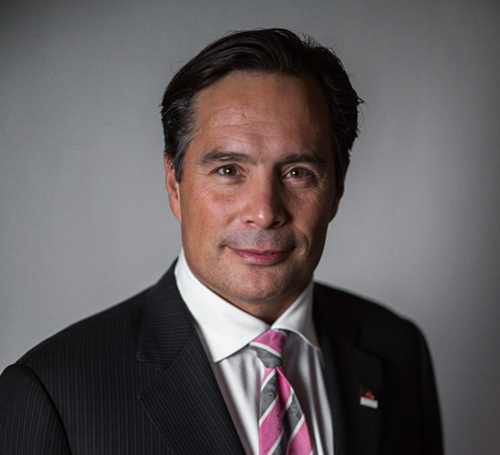Keith Henry Takes Our Indigenous Tourism & Experiences Questions
Keith is the CEO of the Indigenous Tourism Association of Canada. Keith being an indigenous person himself and having a degree in education he naturally became a strong administrator in indigenous organizations in Saskatchewan and in 2008 after moving to BC a few years prior he formally joined the Indigenous Association of Canada to seriously work in the tourism sector, before taking on the national role.
This position allowed him to really get a handle on his own values and thought process around why indigenous tourism is so important for culture revitalization, economic development, and a lot of other possibilities. “In that role, I started to realize what was missing in the country, I started joining the number of partners and we reformed the national organization that I work for today from scratch,” Keith says there was no national ingenious voice back in 2008, but they could see what was missing and resolved these issues. Tourism is such a huge part of the Canadian economy, Keith could see that more had to be done to bring Indigenous tourism to the next level. “So in 2015 I came into this role and I’ve been there since, it’s absolutely one of the best things I’ve done, it been a lot of work,” he explains, “but when I see the power of what we’ve done in terms of the marketing and development and helping communities guide their way through a decision process, yeah it pretty rewarding.”
From a language perspective, using the terms aboriginal vs. indigenous and vice versa, what is the difference and what has been the change in semantics?
Prior to a few years ago, Keith reminds us that we all started using the term in Canada “aboriginal” because in the repatriated constitution of 1982, section 35 defined the concept aboriginal as being first nation, Inuit and Metis. “Since the 80’s, 90’s, and 2000’s there was a political movement to just use the word aboriginal, some within the first nation’s communities still wanted to use other language,” Keith explains, but that term really came into use in the early 2000’s. With the new political government in 2015, there was a move to use the word “indigenous” in replacement of “aboriginal”, as people thought it was a more powerful word.
For tourism this actually worked well for Keith and his team, because most visitors whether you’re domestic or international, think of the word aboriginal as Australian.
The Organization, The Indigenous Tourism Association of BC, is there something like that for every province and territory?
The short answer, Keith says, is no.
Just over a decade ago it was called the Aboriginal Tourism Association of BC and there were about 4 similar associations in Canada: Quebec, Yukon, British Columbia, and rumblings of other types of organizations in the works elsewhere. “One of our goals as a national organization is we’ll take on the national work, but we need to make sure we establish those Provincial and Territorial partners,” he explains. Keith says today he is proud that they have 9 organizations up and running across the country, with most of this starting the last 3-4 years.
When you meet with Destination BC or Destination Canada and they're promoting tourism in general, what's your distinction to how you promote and market your Indigenous services compared to others?
“We really just want to work in partnership with the tourism sector”, Keith describes, “the problem is Indigenous tourism is not new to Canada, in fact, its been tried since really like the late 80-90’s theres been a strong push to grow this thing,” so they’ve really been brainstorming how to fit into the tourism industry and market.
Keith explains they work in partnership with sectors like Destination Canada where they've signed an MOU to agree to focus with them on helping advertise to international markets and making sure they offer authentic and indigenous owned experiences.
How can someone find an Indigenous outlet to support the industry and try a new experience?
Keith announces that they recently launched a new site called destinationindigenous.ca, “its really to guide visitors to find a type of experience that is actually open and give the right kind of authentic experience.” Its a great opportunity to educate your family or just get out and have a relaxing experience here in Canada, whether its only a few hours of fun or a full vacation. Keith is happy to see the pride and acceptance that comes from these experiences, the world has come a long way.
How can marketers take into account the Indigenous voice and perspective?
Keith says it’s as easy as taking a trip to a local indigenous business or hiring someone of Indigenous descent to your team to have that perspective to know what's appropriate and relevant. “We want marketers to go and get out there and market indigenous experiences and include our people in your content, visual imaging, story about area, but make sure you’ve got the right partners guiding you in that process because you don't want to make a good intention turn really bad really fast,” Keith suggests.
What's your advice for approaching an Indigenous person to be on your team?
If you're not sure, feel free to call up the Indigenous Association of Canada, Keith recommends.
Whats a good way to get into tourism marketing?
Keith thinks there are a lot of opportunities in Indigenous tourism marketing because a lot of the businesses struggle to find good marketers to create campaigns that are indigenous focused. You've got to figure out your area of expertise, whether it’s in Indigenous experiences or not, and that's where the success will come from.
Written by Juliana Bermudez

